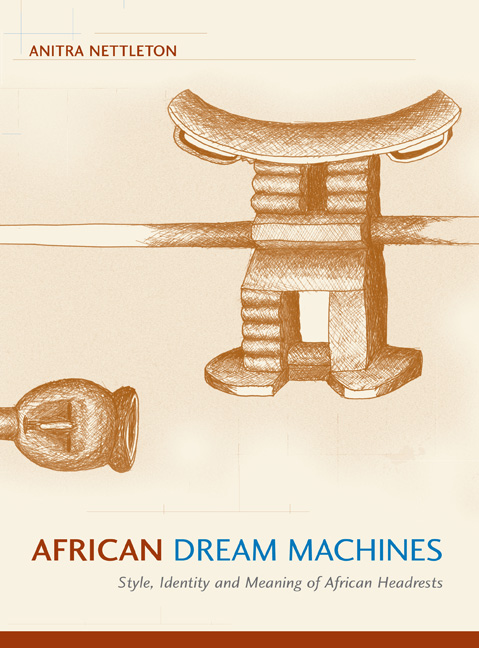Book contents
- Frontmatter
- Contents
- Preface
- Acknowledgements
- Notes on the Use of African Ethnic Names and Country and Place Names
- References to Illustrations in the Text and Notes on Illustrations
- Chapter 1 Headrests and Art
- Chapter 2 A Matter of Style, or, Why Style Matters
- Chapter 3 Methodology, Position and Limitations
- Chapter 4 The Geographical and Chronological Distribution of the Columned Headrest
- Chapter 5 Authenticity and History
- Chapter 6 East African Headrests: Identity, Form and Aesthetics
- Chapter 7 Tracing Histories: Central and Southern African Connections
- Chapter 8 Not Just a Curious Beauty: The Anatomy of Meaning in Useful Objects
- Notes to Chapters
- Bibliography
- List of Illustrations
- Index
Chapter 5 - Authenticity and History
Published online by Cambridge University Press: 18 May 2019
- Frontmatter
- Contents
- Preface
- Acknowledgements
- Notes on the Use of African Ethnic Names and Country and Place Names
- References to Illustrations in the Text and Notes on Illustrations
- Chapter 1 Headrests and Art
- Chapter 2 A Matter of Style, or, Why Style Matters
- Chapter 3 Methodology, Position and Limitations
- Chapter 4 The Geographical and Chronological Distribution of the Columned Headrest
- Chapter 5 Authenticity and History
- Chapter 6 East African Headrests: Identity, Form and Aesthetics
- Chapter 7 Tracing Histories: Central and Southern African Connections
- Chapter 8 Not Just a Curious Beauty: The Anatomy of Meaning in Useful Objects
- Notes to Chapters
- Bibliography
- List of Illustrations
- Index
Summary
THIS CHAPTER INTERROGATES some historical problems of attribution in order to unpick and, it is hoped, destabilise some notions of ethnic identity and authenticity in relation to headrests with column supports that were collected in particular regions at specific historical moments, but which all share the same basic structural traits. This follows from the discussion in the previous chapter of the distribution of headrests with columnar supports and the linking of style with ethnicity. The contention in this chapter is that the fact that these objects share a number of elements across a number of ethnic divisions challenges many of the more problematic aspects of the notion of ‘authenticity’. Because these elements can be used to establish a fluidity of stylistic interchange among groups and an open attitude towards the incorporation of new and useful forms for particular purposes, they can also be used to undermine the idea that ‘authentic’ African art work is necessarily ethnically exclusive in terms of both style and iconography. By examining the circumstances of collection of each headrest in relation to its stylistic forms, it is possible to suggest some of the historical dimensions of the ‘ownership’ of particular styles.
A headrest in the (South African) National Culture History Museum in Tshwane (Pretoria) illustrates the difficulties involved in the division of headrests with columnar supports into different categories, such as those proposed here, as well as those based on notions of ethnic styles. This example has a truncated, flaring conical base with a convex top surface into which an articulated column ‘fits’ (fig. 109). The column is articulated into two sections: the lower section has a spiral design carved in deep relief; the upper section is plain. The platform is slightly butterfly-shaped, with the upper short edges flattened and decorated with a geometrical design. From the underside of the platform, two pendants (one broken), also with relief designs, are placed parallel to the short ends. In its formal arrangement of column and base, this example clearly demonstrates features associated with headrests predominantly associated with Ethiopian and Democratic Republic of the Congo (DRC) examples, while the arrangement of the platform and its pendants point to a provenance in south-east Africa, probably in either Tsonga or Shona territories, which overlap significantly.
- Type
- Chapter
- Information
- African Dream MachinesStyle, Identity and Meaning of African Headrests, pp. 131 - 186Publisher: Wits University PressPrint publication year: 2007



